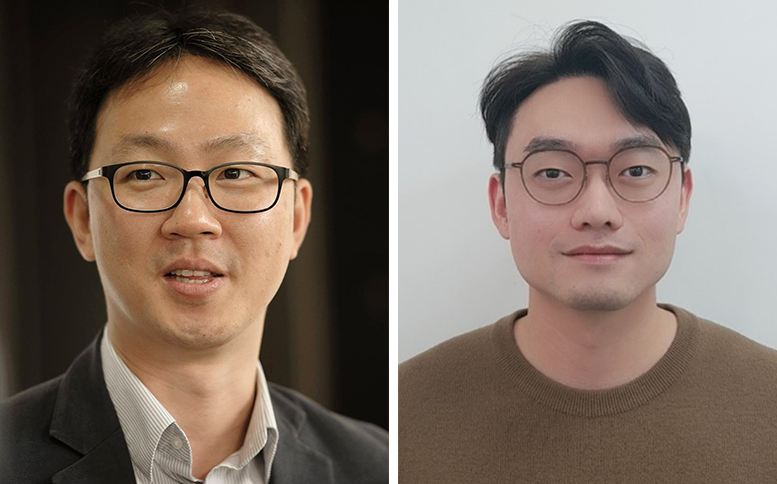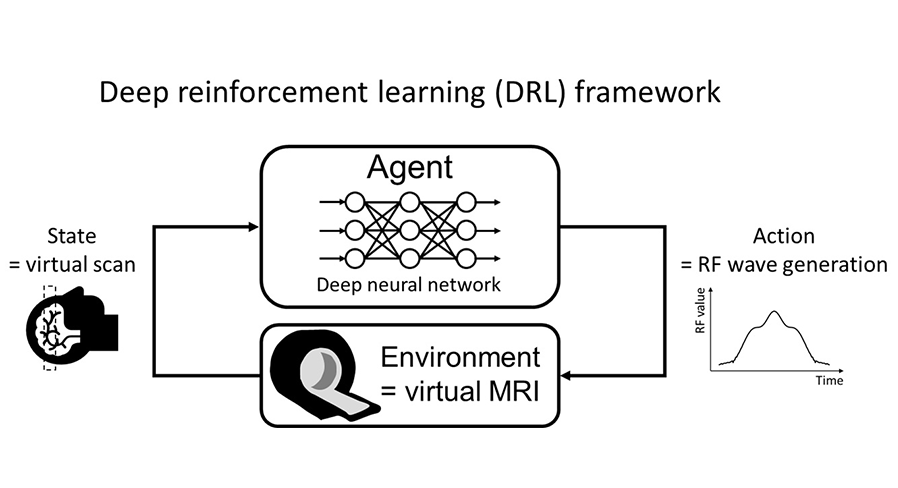Published in <Nature Machine Intelligence>, Nature’s sister journal
Artificial Intelligence succeeds in creating new and efficient radiofrequency waveforms

From left, Profoessor Jongho Lee and Ph.D. student Dongmyung Shin of the
Department of Electrical and Computer Engineering, Seoul National University
Professor Jongho Lee's research team in the Department of Electrical and Computer Engineering has succeeded in developing a technology that allows artificial intelligence to design radiofrequency waveforms used in MRI on its own.
Unlike X-ray or CT that uses radiation, MRI uses magnetic fields and electromagnetic waves to image the inside of the human body in three dimensions. Therefore, it is safe from issues regarding radiation exposure; however, since the energy from frequency is transmitted to the human body, the shooting time may be long.
To solve this problem, Professor Jongho Lee's research team focused on an artificial intelligence technology called deep reinforcement learning, which has also been applied to AlphaGo.
Deep reinforcement learning is a method in which an AI agent learns a kill by self-exploring a given environment to achieve a goal. For example, the self-learning of the strategy for winning the game Go would, in this case, happen by repeatedly playing Go.

Figure An overview of the AI-based MRI radiofrequency wave design method movement
Ph.D. student Dongmyung Shin, who led this research, built a virtual MRI environment and designed the radiofrequency waveform created by artificial intelligence to minimize the energy delivered to the human body while maintaining the quality of the image.
As a result, artificial intelligence succeeded in creating a new efficient radiofrequency waveform. In particular, this waveform shows superior characteristics compared to the existing theoretical-based results developed by experts. These results suggest that there exists a more effective waveform design method than the design methods developed by experts so far.
The results findings were published in
<Nature Machine Intelligence>, a sister journal of the world-renowned academic journal ‘Nature.’ Based on these results, Dongmyung Shin plans to continue his research as an artificial intelligence team leader (Chief-AI-Officer) at RadiSen, an artificial intelligence medical imaging startup.
For further information, please contactProf. Jongho Lee.


